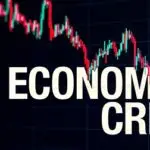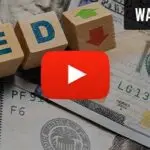Critical Debt Danger
Billionaire hedge fund manager Ray Dalio has issued a stark warning: The U.S. economy is teetering on the edge of disaster due to unsustainable debt and deficit levels. If the government fails to take immediate action, Dalio predicts an “economic heart attack” that could send the country into a “debt death spiral.”
Dalio emphasized the urgency of the situation. He stated, “It’s like if I was a doctor and I was speaking with you about your condition, I would say to you, this is now very, very serious. The U.S. government needs to cut its budget deficit from 7.5% of GDP down to 3%, or face the consequences.” He stressed that this must happen before the end of Donald Trump’s second term. Meaning lawmakers have no more than three years to slash the fiscal deficit by over half. Otherwise, bond markets will plunge, and the economy will enter a catastrophic downward spiral.1
The Alarming State of U.S. Debt
Currently, U.S. debt has skyrocketed to $36.22 trillion. $28.8 trillion owned by the public. This includes individuals, corporations, state and local governments, the Federal Reserve, and foreign nations. This rapid growth is fueled by historic levels of deficit spending. Since 2020 alone, the national debt has increased by $13 trillion. Averaging an alarming $2.6 trillion per year for five consecutive years. At this pace, the U.S. will soon surpass its World War II-era debt peak.2
For 2024, the federal deficit stands at $1.8 trillion, or 6.4% of GDP, with annual interest payments on the debt exceeding $1 trillion. Dalio warns that high debt means higher interest payments. Making the economy increasingly fragile and vulnerable to crises. This also fuels inflation, compounding economic instability.3
 4
4
The Debt Death Spiral
If spending cuts aren’t implemented soon, the U.S. could enter a “debt death spiral”. That is where the government must continually borrow more money just to pay interest on its existing debt. Dalio cautions that this vicious cycle is already unfolding. When people see the spiral, they don’t want to hold the debt. So, the government must offer higher and higher interest rates to get people to buy it, making the debt more expensive to service, and so on.
Dalio supports aggressive action to reduce the budget deficit to 3% of GDP. He is calling on Elon Musk’s proposed Department of Government Efficiency (DOGE) to enforce spending cuts. His message is clear: hard choices must be made now, or disaster will strike.
Maturing Debt Adds to the Crisis
By 2025, a staggering $9.2 trillion of U.S. government debt will mature and need refinancing. That amounts to 25.4% of the total $36.2 trillion debt. This sum is nearly double federal revenue, making repayment a daunting challenge. To make things more complicated, much of this debt was borrowed at much lower interest rates. With current average interest rates at their highest levels since 2010, rolling over this debt will be extremely costly.5
The bond market is already under severe strain. Yields are soaring as investors demand higher returns to compensate for increased risk. Rising bond yields have a cascading effect on the economy. They lead to higher interest rates on loans and mortgages, slowing economic growth, and reducing stock market appeal.
A recent high inflation report also means the Federal Reserve will not be cutting interest rates anytime soon. As prices continue to rise, bond investors will demand even better returns. The bond market could reach a breaking point and refuse to buy more U.S. debt. Interest rates would spiral even higher, exacerbating financial instability.
Potential Triggers for a Debt Crisis
The Brookings Institute identified several factors could ignite a full-blown debt crisis:
• Major Treasury holders like China could abruptly start selling off U.S. debt, destabilizing markets.
• Congress could fail to raise the debt ceiling, triggering market turmoil.
• The Federal Reserve could allow inflation to rise unchecked to “inflate the debt away.”
• Debt levels could become so overwhelming that the U.S. considers defaulting, leading to a global financial meltdown.
David Wessel is a senior fellow at the Brookings Institution. He acknowledges that risks once considered impossible are now becoming increasingly plausible. “There are things I used to assign a zero probability to that are now somewhat higher,” Wessel noted. The Brookings Institute issued this warning. That even if the U.S. avoids an immediate debt crisis, future generations will pay the price. They will struggle with slow growth, reduced living standards, and less chance for investment.6
The Institute also warned of worldwide consequences. “the more worrisome risk is that a breakdown in Treasury markets could cause a global financial crisis that erodes asset values, destabilizes financial institutions, and pushes economies into recession.”7
Conclusion
With the U.S. facing an “economic heart attack,” an ounce of prevention is worth a pound of cure. People can protect their financial future by diversifying their retirement portfolios. One way to do this is with physical precious metals in a Gold IRA. Gold has historically been a stable asset in times of economic uncertainty. And as investors flee risky markets, demand for gold is expected to rise.
Don’t wait for the debt crisis to unfold—take action now. Contact American Hartford Gold today at 800-462-0071 to learn more about protecting your wealth with precious metals.






